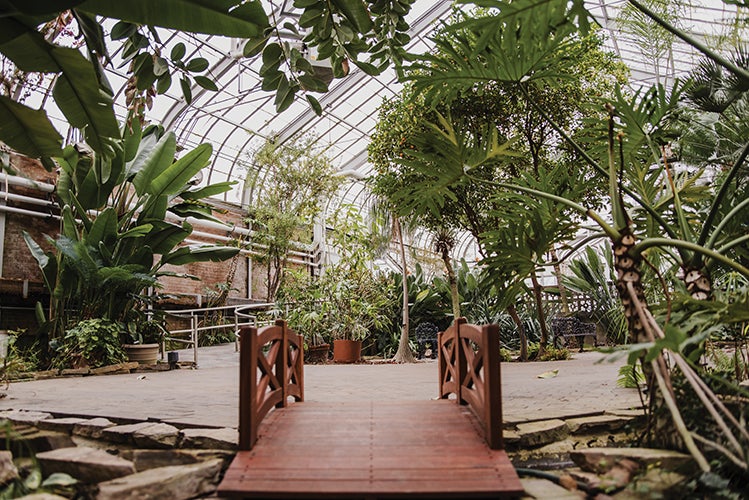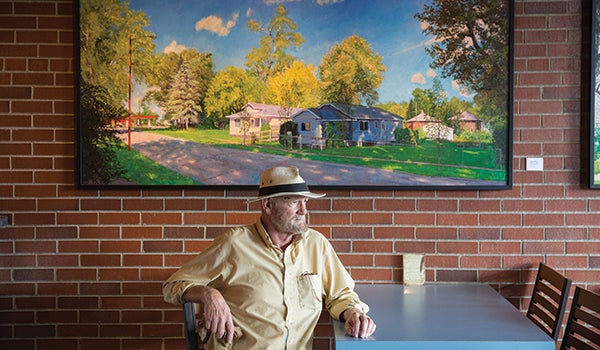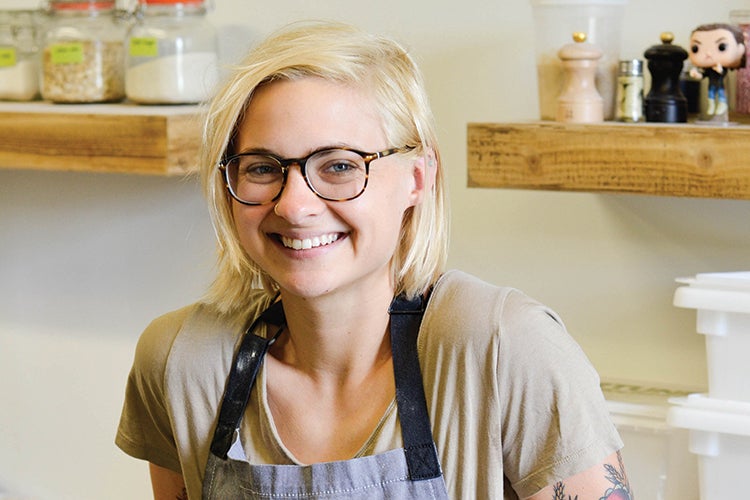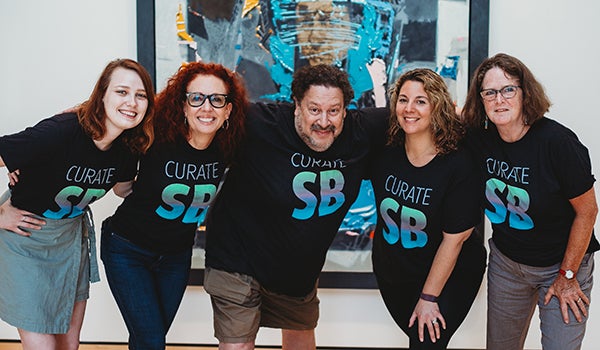When you think of descriptors for South Bend, “vibrant environment for plant life” probably isn’t high on your list.
Evergreens and sweet corn may thrive in this part of the world, but for more exotic fauna — bird-of-paradise flowers, towering cacti — you might think you’d have to travel somewhere a bit less permaclouded.
Not so at the Potawatomi Conservatories.
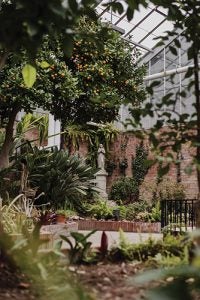 Tucked just off a busy section of Mishawaka Avenue, the glass-walled greenhouses of this 50-year-old facility play host to dozens of species of tropical plants. The property is a great resource for South Bend’s green-thumbed residents, but, according to conservatory director Emily Bradford, it isn’t just for diehard horticulturists.
Tucked just off a busy section of Mishawaka Avenue, the glass-walled greenhouses of this 50-year-old facility play host to dozens of species of tropical plants. The property is a great resource for South Bend’s green-thumbed residents, but, according to conservatory director Emily Bradford, it isn’t just for diehard horticulturists.
“We have a lot of people who have never come in here or who don’t realize that we’re a space that is open to the public,” she says. “The space is very much open to the public.”
The facility’s primary mission in its five-decade history has been botanical education, a drive that dates back to the conservatories’ early days as the purpose-built meeting space for philanthropist Ella Morris’ personal garden club. That educational mission still exists today — school groups are among the property’s most regular visitors — but Emily says that there are plenty more reasons to visit than just to read up on agave or prickly pear.
“A lot of people will come in here and just hang out in the heat,” she says. “A lot of people bring their kids here. A lot of people will just meet their friends here and have lunch. People will use the space to study. … I mean, it’s just a great environment.”
The small entrance fee for visitors ($3 for adults and $2 for children) like these helps to maintain the city-owned, nonprofit-managed property. As a municipal space, the conservatories have a particular interest in engaging the community, and that effort shines through in the space’s average monthly schedule.
Local yoga instructor Jamie Robinson holds classes at Potawatomi two to three days a week. Photographers regularly drop by with senior portrait or engagement session clients. Area bands perform in the conservatory’s Desert Dome, and a number of other arts groups, from drumming teachers to fellow Mishawaka Avenue denizen Make South Bend, pop in from time to time to host workshops. The Conservatories even host weddings — including their director’s.
“We have weddings here all the time,” Emily says. “They’re so beautiful! I got married here myself this summer. It was hot, but everyone only says how amazing the wedding was.”
For many (particularly during South Bend’s seemingly never-ending winters), this tropical-plant-friendly heat is one of the best reasons to visit the conservatories. To keep the exotic species alive, the greenhouses have to maintain a constant 60-and-up climate — which, during this year’s historic cold snap, proved a major problem.
On the night of Jan. 30, as temperatures around the region dipped more than 20 degrees below zero, the strain on the greenhouses’ boiler caused the entire heating system to shut down. The normally steamy temperatures in the facility took a dive, and by the time that Emily discovered the broken boiler the next day, the damage was done.
“It was just that one night,” she says, “which really puts things in perspective. Because you can really fight pests all year and make sure you’re watering plants every single day for forever, and then overnight the cold is just going to wipe it out.”
Many of the plants bounced back, but about 20 percent of the collection did not survive. The gaps in the displays aren’t immediately visible to the first-time visitor, but Emily says the damage is significant, particularly in the areas closest to the greenhouses’ perimeter.
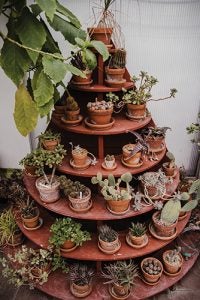 Media outlets from WSBT to the Chicago Tribune picked up the story of the lost plants in the days after the storm, and since then, the conservatories have seen a sharp uptick in donations of both time and money.
Media outlets from WSBT to the Chicago Tribune picked up the story of the lost plants in the days after the storm, and since then, the conservatories have seen a sharp uptick in donations of both time and money.
Volunteers are always welcome at the facility — Emily was one herself before being offered the greenhouses’ sole full-time staff role — but they’re particularly important now, as recovery and replacement efforts continue at full speed.
“Right now we’re definitely looking for any kind of help we can get,” she says. “We will find something that’s in your wheelhouse that you can help us with. Things can be as simple as sweeping or watering, which is a pretty simple task, to pruning, propagating and rearranging plants.
“Anything that you are skilled at, we could probably use your help in that department.”
Emily is hopeful that, with the attention the conservatories have gained through this recent tragedy, they will be able to emerge better than ever. She envisions a diversified collection, updated signage to help visitors more easily guide themselves through the space, and a reorganizing of the greenhouses to group plants together into more distinct sections based on genus or region of origin.
“The plant loss was awful, and it did set us back several paces,” she says. “But I think this is a great opportunity for the city to know that we exist. This belongs to us, so we should all take care of it together.”
Moving forward, the director of the conservatories says that she hopes the space will become a “shining star” in the South Bend community.
“I’d really like for this to be something that we’re really proud of,” she says. “Something that, when you say, ‘I’m coming to South Bend, what should I do?’ the answer is: ‘Go to the conservatory.’”

